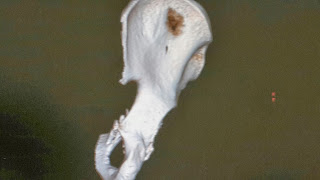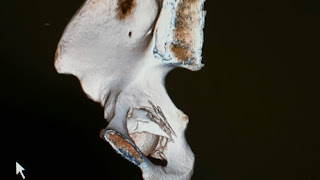I do feel unlike many other joint injuries the mangement of ligamentous injuries in knee is clear cut with studies showing good results with the current techniques.
ACL tear. Best diagnostic test is Lachman where in the end point is qualified by being soft or hard. The degree of tibial movement is graded upto 5 mm , 5 to 10 mm and more than 10 mm. If one can elicit a pivot shift it would be more conclusive. MRI should not be taken as an indication for surgery as many partial tears are unstable on clinical exam.
Even a grade 1 with - soft end point would need a surgical intervention within a few weeks to days if there are no geographic bone bruise and full rom to prevent further meniscal and chondral injury
PCL tear. The simplest assesment is the step off sign.
Grade 1. Tibia still in front but less than normal at 90 degree flexion
Grade 2. At the level of femur
Grade 3. Behind the femur.
One could always push posterioly further to asses the end point
To complete the assesment of the posterior ligamentous structures
A posterior draw in neutral, int rotation and external rotation is done. If the posterior draw is exaggerated in internal rotation the posteriomedial corner is incompetent. For posterior lateral the dial test at 30 degrees is more accurate. The step off sign, posterior draw in internal rotation and dial test gives an accurate diagnosis of the posterior ligamentous structures of the knee.
The management is as follows
Grade 1 conservative- essentially intensive quads strengthening along with general measures
Grade 3 always surgical reconstruction.
Grade 2- is were the controversy exists. My take would be if either poster medial corner or posterior later corner is compromised I would proceed to reconstruct the pcl and the affected corner as soon as the knee is quiet within 2 weeks
To complete the collaterals can be tested in 30 degrees flexion. The LCL can be palpated in figure of four Position like a cord if palpated perpendicular to its direction.
 The timing is controversial. The results from the experts suggest recon within 3 weeks have the best results. I do agree with my experience (level 4- 60 cases) but qualify that medial side femoral side repairs if attempted intensive physio is warranted to avoid stiffness. Lateral reconstruction does not have stiffness as a problem unlike medial side. The only need for staged recon is in open injuries where in I would do the collaterals acutely and stage both cruciates simultaneously in 2 to 3 months.
The timing is controversial. The results from the experts suggest recon within 3 weeks have the best results. I do agree with my experience (level 4- 60 cases) but qualify that medial side femoral side repairs if attempted intensive physio is warranted to avoid stiffness. Lateral reconstruction does not have stiffness as a problem unlike medial side. The only need for staged recon is in open injuries where in I would do the collaterals acutely and stage both cruciates simultaneously in 2 to 3 months.
ACL tear. Best diagnostic test is Lachman where in the end point is qualified by being soft or hard. The degree of tibial movement is graded upto 5 mm , 5 to 10 mm and more than 10 mm. If one can elicit a pivot shift it would be more conclusive. MRI should not be taken as an indication for surgery as many partial tears are unstable on clinical exam.
Even a grade 1 with - soft end point would need a surgical intervention within a few weeks to days if there are no geographic bone bruise and full rom to prevent further meniscal and chondral injury
PCL tear. The simplest assesment is the step off sign.
Grade 1. Tibia still in front but less than normal at 90 degree flexion
Grade 2. At the level of femur
Grade 3. Behind the femur.
One could always push posterioly further to asses the end point
To complete the assesment of the posterior ligamentous structures
A posterior draw in neutral, int rotation and external rotation is done. If the posterior draw is exaggerated in internal rotation the posteriomedial corner is incompetent. For posterior lateral the dial test at 30 degrees is more accurate. The step off sign, posterior draw in internal rotation and dial test gives an accurate diagnosis of the posterior ligamentous structures of the knee.
The management is as follows
Grade 1 conservative- essentially intensive quads strengthening along with general measures
Grade 3 always surgical reconstruction.
Grade 2- is were the controversy exists. My take would be if either poster medial corner or posterior later corner is compromised I would proceed to reconstruct the pcl and the affected corner as soon as the knee is quiet within 2 weeks
To complete the collaterals can be tested in 30 degrees flexion. The LCL can be palpated in figure of four Position like a cord if palpated perpendicular to its direction.
The LCL is best atreated surgically while the MCL management is more controversial. My general rule on medial side is repair of the tibial side avulsion if lax and conservative on the femoral side generally. The tibial side avulsion of the superficial mcl could be analogous
to as stenner lesion in the thumb. If avulsed and placed superficial to the pes ansernus, one
cannot expect a stable medial side and hence acute repair with suture anchors of both the deep and superficial mcl is warranted. If the posterior draw in internal rotation is exagerated the POL should be also reconstructed as described by Kim or stannad.
to as stenner lesion in the thumb. If avulsed and placed superficial to the pes ansernus, one
cannot expect a stable medial side and hence acute repair with suture anchors of both the deep and superficial mcl is warranted. If the posterior draw in internal rotation is exagerated the POL should be also reconstructed as described by Kim or stannad.
The posteriolateral reconstruction is best done by the method by the Korean maestro Kim as shown in the figure below
 The timing is controversial. The results from the experts suggest recon within 3 weeks have the best results. I do agree with my experience (level 4- 60 cases) but qualify that medial side femoral side repairs if attempted intensive physio is warranted to avoid stiffness. Lateral reconstruction does not have stiffness as a problem unlike medial side. The only need for staged recon is in open injuries where in I would do the collaterals acutely and stage both cruciates simultaneously in 2 to 3 months.
The timing is controversial. The results from the experts suggest recon within 3 weeks have the best results. I do agree with my experience (level 4- 60 cases) but qualify that medial side femoral side repairs if attempted intensive physio is warranted to avoid stiffness. Lateral reconstruction does not have stiffness as a problem unlike medial side. The only need for staged recon is in open injuries where in I would do the collaterals acutely and stage both cruciates simultaneously in 2 to 3 months.



